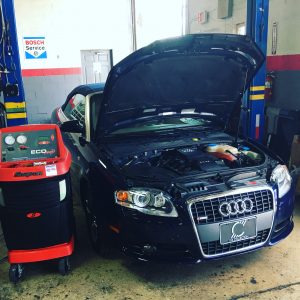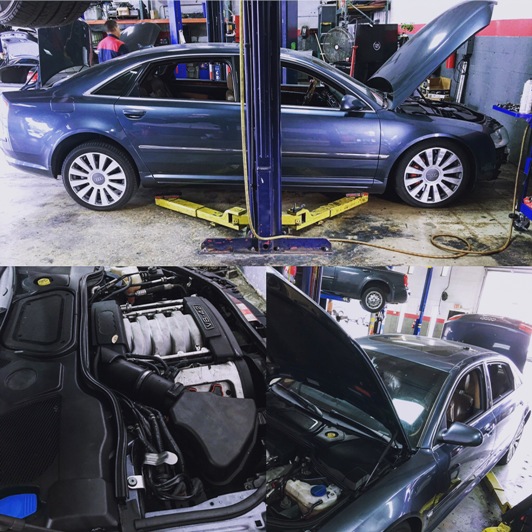There is so much going on beneath the hood when a car is running. Everywhere, something’s moving, vibrating, heating up or cooling down. To sum it up really fast, this is what happens: the engine sucks fuel from the tank, mixes it with air, ignites it and uses the explosion to create movement.
However, burning fuel generates heat. Usually, engines require a certain temperature to function properly, but what does it do with the extra heat? This is where the cooling system comes into action.
The inner workings of the cooling system
The overall cooling system scheme is not awfully complicated. Still, it does one of the most important supporting jobs for the engine. A basic car cooling system uses a pump to circulate fluid through the engine and then to the front radiator. The fluid takes on heat from the engine and exchanges it in the radiator.
You should also thank your cooling system for not having to freeze while you’re driving through the cold winter months. When you turn the heat on in your car, part of the cooling fluid travels to the interior radiator, bringing on heat collected from the engine. From there, an electric fan pushes it through the dashboard vents.
Taking care of your car’s cooling system
 Just like any mechanical system, your car’s cooling system may cease to function properly. And without a doubt, this is the last thing you want to happen, especially when travelling long distances. Cooling system malfunctioning leads to engine overheating – not only that the engine won’t work at its best, but it also drastically increases chances of getting blown head gaskets and cylinder leaks. These things take a lot of time and money to fix, so it’s best to fix and maintain your car’s cooling system periodically.
Just like any mechanical system, your car’s cooling system may cease to function properly. And without a doubt, this is the last thing you want to happen, especially when travelling long distances. Cooling system malfunctioning leads to engine overheating – not only that the engine won’t work at its best, but it also drastically increases chances of getting blown head gaskets and cylinder leaks. These things take a lot of time and money to fix, so it’s best to fix and maintain your car’s cooling system periodically.
There are two very common issues that can cause a cooling system to malfunction: leaks and clogging.
Leaks are best diagnosed by a dropping level of cooling fluid in the tank. If the fluid drops overnight or after driving for a while, there’s probably a leak somewhere on the installation. Finding the leak may be difficult if it is really small (like a pore), so you may need to check in with an auto repair shop. Usually, the issue is solved by replacing the hose causing the leak. You should avoid using crack plugging solutions found on the market; not that they usually don’t work, but may also clog the whole system.
In more severe cases, it’s the radiator or the head gasket that allows coolant to leak out. While replacing your radiator is doable with a bit of experience and proper tools, head gasket replacement should only be done by a professional.
On the other hand, a clogged cooling system won’t allow proper heat transfer, overheating the engine. Clogged systems are usually the result of improper maintenance or bad seals. It’s important to flush your cooling system once in a while, according to your car’s manufacturer instructions. This way, deposits won’t accumulate enough to create a blockage.
On a final note, always remember to use proper coolant recommended by the manufacturer for optimum results and engine performance.

